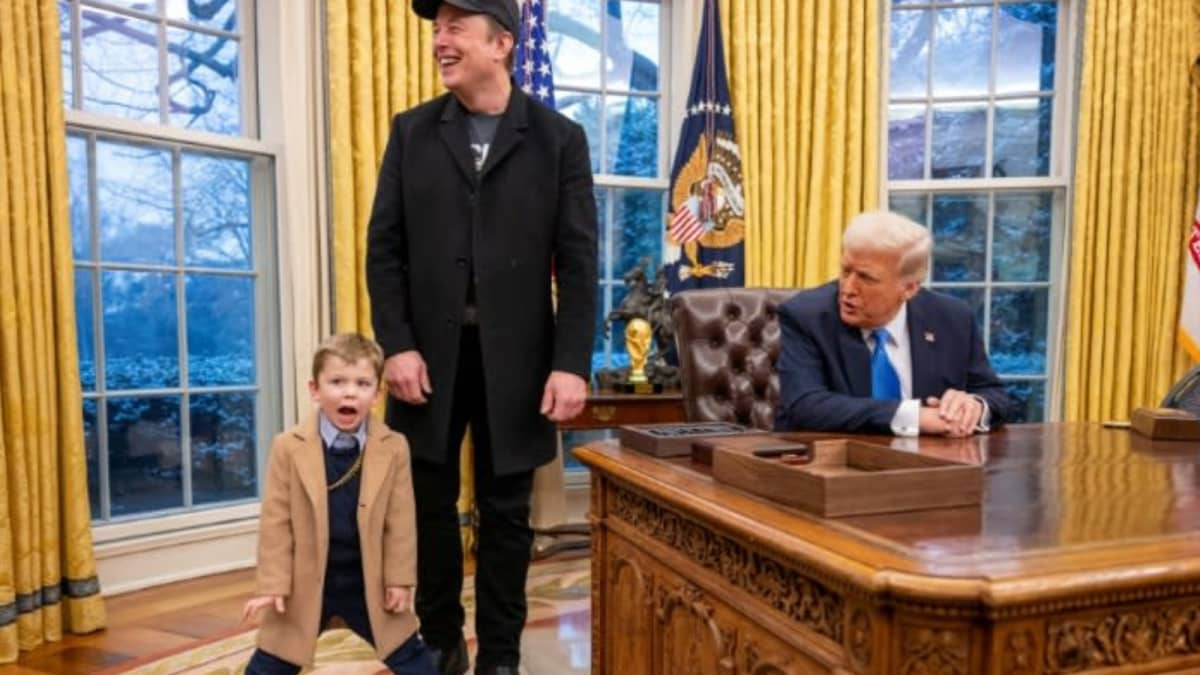 |
|
The seemingly mundane act of a four-year-old picking his nose unexpectedly captured the world's attention during a significant political event. Elon Musk's son, X Æ A-Xii, accompanied his father to a meeting in the Oval Office with President Donald Trump. While the purpose of the meeting—the signing of an executive order to further reduce the federal workforce—was undoubtedly newsworthy, it was overshadowed by a short video clip that went viral. The clip, shared by the White House itself, showed X standing near President Trump's table, engaging in the rather common childhood behavior of nose-picking. This seemingly innocuous act sparked a flurry of online reactions, transforming a serious political event into a global conversation on the peculiarities of viral media and the unpredictable nature of news cycles. The event highlights the power of the internet to unexpectedly alter the narrative of even high-profile, meticulously planned occurrences.
The incident raises several interesting points. Firstly, it underscores the unpredictable nature of capturing public attention in the age of social media. A carefully orchestrated event, involving the President of the United States and a prominent tech billionaire, was ultimately overshadowed by a child's seemingly trivial action. This incident serves as a potent reminder of the power of unexpected moments in a world saturated with media content. The virality of the video points towards a societal fascination with the seemingly mundane, particularly when it involves high-profile figures. People are drawn to glimpses into the 'private' lives of public figures, even if the glimpse is as inconsequential as a child picking their nose.
Secondly, the incident prompts reflection on the role of children in the public sphere, especially those belonging to highly influential individuals. X Æ A-Xii's presence in the Oval Office was itself noteworthy, highlighting the increasingly blurred lines between the personal and professional lives of public figures. While Elon Musk has often brought his son to public events, the child's presence in this highly formal and politically charged setting sparked discussions about appropriate behavior and the boundaries of public appearances for children of celebrities. This raises questions about the pressures and expectations placed on children of public figures and the potential ethical concerns surrounding their exposure to highly publicized events at such a young age.
Further analysis reveals the complexities of media representation and the power of visual content. A still image or a short video clip, divorced from the context of the larger event, can take on a life of its own. The focus shifted almost entirely from the politically significant executive order to the child's behavior, highlighting the selectivity of online attention and the impact of easily digestible, visually captivating content. The video's virality underscores the dominance of visual media in shaping public perception and emphasizes the crucial role of context in interpreting events.
Finally, the incident offers a glimpse into the evolving media landscape. The ease with which the video was disseminated, the speed at which it spread, and the variety of reactions it generated demonstrate the power of social media to shape narratives and influence public opinion. The White House's own sharing of the video, perhaps unintentionally, amplified its reach and contributed to its viral success. This incident serves as a case study in how seemingly minor events can become major news stories in the digital age, highlighting the complexities and challenges of managing public perception in an increasingly interconnected world. The unexpected focus on a child's nose-picking overshadowing a significant political event underscores the surprising and often unpredictable ways in which the internet shapes public discourse and alters the course of media narratives.
Source: Elon Musk’s Son Seen Picking His Nose At Oval Office
